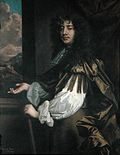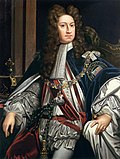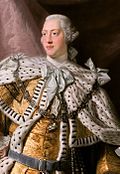The King's Purse
Unveiling the historical role and evolution of the office responsible for funding the British Army.
Explore Role 👇 View Office Holders 👥Dive in with Flashcard Learning!
🎮 Play the Wiki2Web Clarity Challenge Game🎮
Overview
The Office Defined
The Paymaster of the Forces was a significant position within the British government, established in 1661 following the Restoration of the Monarchy. This office was primarily responsible for a crucial aspect of financing the British Army, evolving from earlier ad hoc arrangements into a more formalized administrative role.
Historical Context
Created after the tumultuous period of the Commonwealth, the Paymaster of the Forces operated under the Crown. Its responsibilities included managing funds allocated by Parliament for military expenditure, acting essentially as the army's domestic banker before the widespread development of modern banking systems.
Duration and Succession
This influential office existed for over 175 years, from its inception in 1661 until its abolition on December 1, 1836. It was ultimately superseded by the newly established post of Paymaster General, marking the end of a distinct era in public financial administration.
Historical Evolution
Inaugural Holder and Early Administration
Sir Stephen Fox, an exceptionally capable administrator who had served Charles II during his exile, was the first to hold the office of Paymaster of the Forces. Prior to this, military campaigns were funded through temporary treasurers-at-war. Fox's tenure marked the beginning of a more structured approach to army finance.

Transformation into a Political Prize
Over time, particularly from the reign of Queen Anne onwards, the paymastership evolved. It frequently changed hands with shifts in government, becoming a lucrative political appointment. By the 18th century, it was considered one of the most rewarding positions attainable through parliamentary service, often held by individuals who would later rise to prominence, including future prime ministers.
Financial Responsibilities and Liability
The Paymaster's core duty was to receive funds from the Exchequer and other sources, disbursing them for army expenses under royal or Treasury warrants. Critically, the Paymaster bore unlimited personal liability for all funds held, meaning their private estate was accountable until a final discharge (quietus) was obtained, a liability that could even pass to heirs.
List of Paymasters
The following table details the individuals who held the office of Paymaster of the Forces, their terms of service, the governments they served under, and the reigning monarch.
| Portrait | Name(s) | Term of office | Government | Monarch (Reign) |
||||||
|---|---|---|---|---|---|---|---|---|---|---|
 |
Sir Stephen Fox[note 1] | 18 March 1661[3] | 9 February 1676[3] | Clarendon Cabal Danby I |
 Charles II (1660–1685) |
|||||
 |
Sir Henry Puckering, 3rd Baronet | 9 February 1676[3] | 23 May 1679[3] | // | ||||||
 |
Sir Stephen Fox | 23 May 1679[3] | 3 January 1680[3] | The Chits | ||||||
 |
Nicholas Johnson[note 2] and (?) William Fox (died 1680 aged 20)[4][note 3] |
3 January 1680[3] | 20 April 1682[3] (†Johnson) 28 April 1682[3] |
|||||||
 |
Charles Fox[note 4] | 28 April 1682[3] | 26 December 1685[3] | |||||||
 |
Richard Jones, 1st Earl of Ranelagh | 26 December 1685[3] | 22 December 1702[3] |  James II (1685–1688) |
||||||
| Carmarthen–Halifax Carmarthen Whig Junto I Pembroke |
 William III and Mary II (1689–1694) William III (1694–1702) |
|||||||||
| Godolphin–Marlborough |  Anne (1702–1714) |
|||||||||
 |
John Grubham Howe (Home troops only) with Charles Fox (1702–05) James Brydges (1705–13) Thomas Moore (1713–14) (Overseas troops) |
22 December 1702[3] | 3 October 1714[3] | |||||||
| Oxford–Bolingbroke | ||||||||||
 |
Sir Robert Walpole | 3 October 1714[3] | 17 October 1715[3] |  George I (1714–1727) |
||||||
 |
Henry Clinton, 7th Earl of Lincoln | 17 October 1715[3] | 11 June 1720[3] | Townshend | ||||||
 |
Sir Robert Walpole | 11 June 1720[3] | 19 April 1721[3] | |||||||
 |
Charles Cornwallis, 4th Baron Cornwallis | 19 April 1721[3] | 20 January 1722[3] | Walpole–Townshend |  George II (1727–1760) |
|||||
 |
Spencer Compton (Baron Wilmington from 1728) |
15 March 1722[3] | 15 May 1730[3] | |||||||
| Walpole | ||||||||||
 |
Henry Pelham | 15 May 1730[3] | 24 December 1743[3] | Carteret | ||||||
 |
Thomas Winnington | 24 December 1743[3] | 23 April 1746† | Broad Bottom | ||||||
 |
William Pitt the Elder | 7 May 1746[3] | 16 December 1755[3] |  George III (1760–1820)[note 5] |
||||||
| Newcastle I | ||||||||||
 Dupplin |
Henry Vane, 1st Earl of Darlington and Thomas Hay, Viscount Dupplin |
16 December 1755[3] | 8 December 1756[3] | Pitt–Devonshire 1757 Caretaker |
||||||
| Thomas Hay, Viscount Dupplin and Thomas Potter |
8 December 1756[3] | 15 July 1757[3] | ||||||||
 |
Henry Fox, 1st Baron Holland | 15 July 1757[3] | 12 June 1765[3] | Pitt–Newcastle | ||||||
| Bute Grenville |
||||||||||
| Grenville | Rockingham II | |||||||||
 |
Charles Townshend | 12 June 1765[3] | 21 August 1766[3] | // Rockingham I Chatham |
||||||
 North |
Frederick North, Lord North and George Cooke |
21 August 1766[3] | 9 December 1767[3] | // | ||||||
 Townshend |
George Cooke and Thomas Townshend |
9 December 1767[3] | 17 June 1768[3] (†Cooke) 17 June 1768[3] |
|||||||
 |
Richard Rigby | 17 June 1768[3] | 10 April 1782[3] | Grafton North |
 Edmund Burke |
10 April 1782[3] | 1 August 1782[3] | Rockingham II | ||
 |
William Wyndham Grenville | 1 August 1782[3] | 16 April 1783[3] | Shelburne |  Isaac Barré |
16 April 1783[3] | 8 January 1784[3] | Fox–North Pitt the Younger I |
||
 Mulgrave |
William Wyndham Grenville and Constantine Phipps, 2nd Baron Mulgrave |
7 April 1784[3] | 2 September 1789[3] | // |  Edmund Burke |
8 January 1784[3] | 7 April 1784[3] | Pitt the Younger I | ||
 George IV (1820–1830) |
||||||||||
| The Lord Mulgrave and James Graham, 3rd Duke of Montrose |
2 September 1789[3] | 7 March 1791[3] |   |
George Rose and Lord Charles Somerset |
7 July 1804[3] | 17 February 1806[3] | Pitt the Younger II | |||
| Dudley Ryder and Thomas Steele |
7 March 1791[3] | 5 July 1800[3] | Addington |   |
Richard Temple-Nugent-Brydges-Chandos-Grenville, 1st Earl Temple and Lord John Townshend |
17 February 1806[3] | 4 April 1807[3] | All the Talents | ||
| Thomas Steele and George Canning |
5 July 1800[3] | 26 March 1801[3] |   |
Charles Long and Lord Charles Somerset |
4 April 1807[3] | 26 November 1813[3] | Portland II Perceval Liverpool |
|||
| Thomas Steele and Sylvester Douglas, 1st Baron Glenbervie |
26 March 1801[3] | 3 January 1803[3] |  |
Charles Long and F. J. Robinson |
26 November 1813[3] | 9 August 1817[3] | Liverpool | |||
 |
Charles Long (Baron Farnborough from 1826) |
9 August 1817[3] (continued) |
14 July 1826[3] |  George IV (1820–1830) |
||||||
 |
William Vesey Fitzgerald | 14 July 1826[3] | 10 July 1828[3] | Canningite Govt. Canning · Goderich Wellington–Peel |
||||||
 |
John Calcraft | 10 July 1828[3] | 30 December 1830[3] | // |  Lord John Russell |
30 December 1830[3] | 30 December 1834[3] | Whig Govt. Grey · Melbourne I |
 William IV (1830–1837) |
|
 |
Sir Edward Knatchbull, 9th Baronet | 30 December 1834[3] | 28 April 1835[3] | Peel I | ||||||
 |
Sir Henry Parnell, 4th Baronet | 28 April 1835[3] | 1 December 1836[3] | Melbourne II | ||||||
Office merged into that of Paymaster General, 1836.
Paymaster of the Forces Abroad
Distinct Role During Wartime
During the War of the Spanish Succession (1702–1714), a separate office of Paymaster of the Forces Abroad was established. This role was distinct from the main Paymaster of the Forces and was specifically created to manage the finances of armies deployed overseas, particularly Queen Anne's forces in the Low Countries.
Remuneration and Appointment
Appointed similarly to the main Paymaster, these individuals oversaw specific overseas deployments. The position carried a salary of 10 shillings per day. While Colonel Thomas Moore served as paymaster for forces in Minorca and garrisons like Dunkirk and Gibraltar, he is sometimes considered separate from the primary "Abroad" appointments.
Holders of the Abroad Post
The individuals who served as Paymaster of the Forces Abroad included:
- Charles Fox (23 December 1702 – 10 May 1705)
- James Brydges (10 May 1705 – 4 September 1713)
- Col. Thomas Moore (4 September 1713 – 3 October 1714)
Related Offices
Master-General of the Ordnance
This office was responsible for the supply, manufacture, and management of artillery and ammunition for the British Army, playing a vital role in military logistics alongside the Paymaster's financial oversight.
British Army
The entity whose operational funding was managed by the Paymaster of the Forces. Understanding the army's structure and needs provides context for the Paymaster's role.
Paymaster General
The successor office established in 1836, which absorbed the functions of the Paymaster of the Forces, consolidating public financial administration.
Notes & References
Explanatory Notes
The following notes provide additional context or clarification for information presented in this document:
- Sir Stephen Fox was knighted on July 1, 1665.
- Nicholas Johnson was the brother-in-law of Sir Stephen Fox.
- William Fox was the second son of Sir Stephen Fox. His early death at age 20 is noted on his monument.
- Charles Fox was the third son of Sir Stephen Fox.
- George IV served as Prince Regent from February 5, 1811, during the later period of his father's reign.
Source Citations
The information presented here is derived from scholarly and historical sources:
Teacher's Corner
Edit and Print this course in the Wiki2Web Teacher Studio

Click here to open the "Paymaster Of The Forces" Wiki2Web Studio curriculum kit
Use the free Wiki2web Studio to generate printable flashcards, worksheets, exams, and export your materials as a web page or an interactive game.
True or False?
Test Your Knowledge!
Gamer's Corner
Are you ready for the Wiki2Web Clarity Challenge?

Unlock the mystery image and prove your knowledge by earning trophies. This simple game is addictively fun and is a great way to learn!
Play now
References
References
- Knighted 1 July 1665[3]
- The second son of Sir Stephen Fox.[3]
- The Prince of Wales served as prince regent from 5 February 1811.
Feedback & Support
To report an issue with this page, or to find out ways to support the mission, please click here.
Disclaimer
Important Notice
This page was generated by an Artificial Intelligence and is intended for informational and educational purposes only. The content is based on a snapshot of publicly available data from Wikipedia and may not be entirely accurate, complete, or up-to-date.
This is not professional or historical advisory content. The information provided on this website is not a substitute for professional historical research, archival consultation, or expert analysis. Always consult primary sources and qualified historians for definitive interpretations and detailed research.
The creators of this page are not responsible for any errors or omissions, or for any actions taken based on the information provided herein.